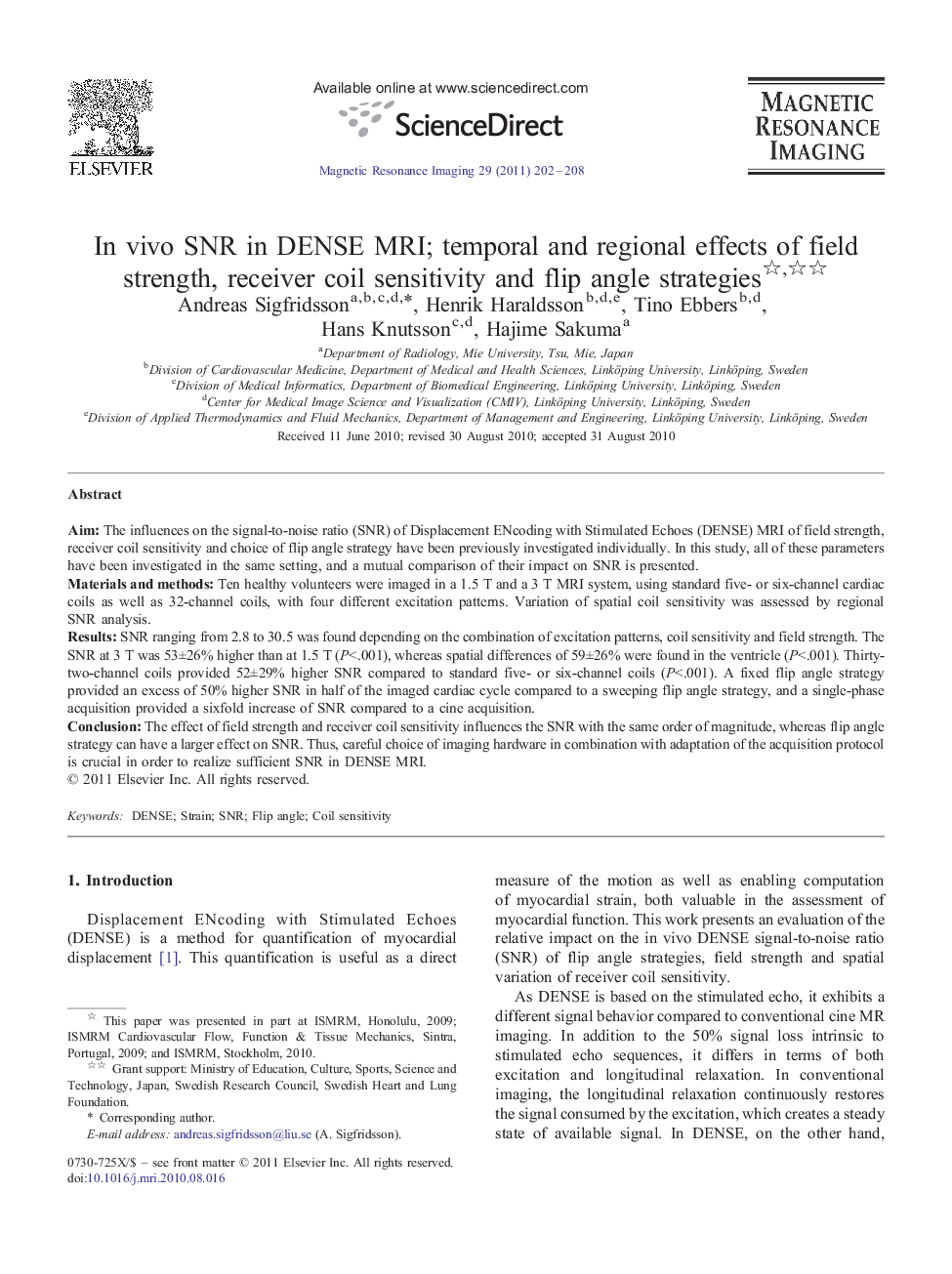| Article ID | Journal | Published Year | Pages | File Type |
|---|---|---|---|---|
| 1807454 | Magnetic Resonance Imaging | 2011 | 7 Pages |
AimThe influences on the signal-to-noise ratio (SNR) of Displacement ENcoding with Stimulated Echoes (DENSE) MRI of field strength, receiver coil sensitivity and choice of flip angle strategy have been previously investigated individually. In this study, all of these parameters have been investigated in the same setting, and a mutual comparison of their impact on SNR is presented.Materials and methodsTen healthy volunteers were imaged in a 1.5 T and a 3 T MRI system, using standard five- or six-channel cardiac coils as well as 32-channel coils, with four different excitation patterns. Variation of spatial coil sensitivity was assessed by regional SNR analysis.ResultsSNR ranging from 2.8 to 30.5 was found depending on the combination of excitation patterns, coil sensitivity and field strength. The SNR at 3 T was 53±26% higher than at 1.5 T (P<.001), whereas spatial differences of 59±26% were found in the ventricle (P<.001). Thirty-two-channel coils provided 52±29% higher SNR compared to standard five- or six-channel coils (P<.001). A fixed flip angle strategy provided an excess of 50% higher SNR in half of the imaged cardiac cycle compared to a sweeping flip angle strategy, and a single-phase acquisition provided a sixfold increase of SNR compared to a cine acquisition.ConclusionThe effect of field strength and receiver coil sensitivity influences the SNR with the same order of magnitude, whereas flip angle strategy can have a larger effect on SNR. Thus, careful choice of imaging hardware in combination with adaptation of the acquisition protocol is crucial in order to realize sufficient SNR in DENSE MRI.
